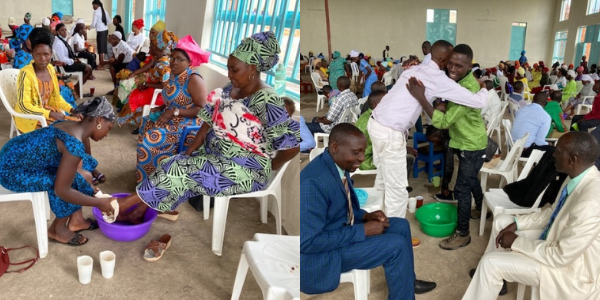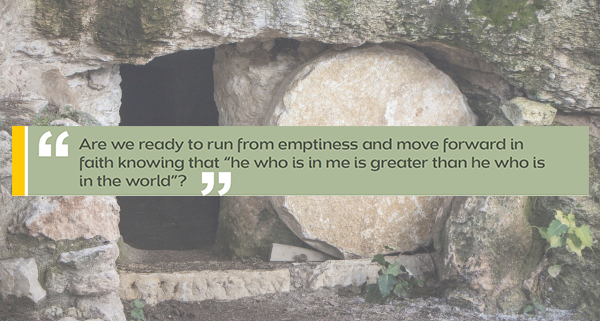
By Chris Elliott serving with the Church of the Brethren in Rwanda on behalf of the Office of Global Mission
Because the Church of the Brethren in central Africa is still young, the ordinances we are so familiar with in the US are new here. The Brethren in the Africa Great Lakes have neither a foundation of tradition nor any baggage of hang-ups, bringing advantages and disadvantages. For me personally, having participated and/or officiated in more than 100 love feasts, I can pretty much go through it on autopilot. If I’m not intentional, I can easily lose sight of the beauty and significance of the ceremony. Introducing our African sisters and brothers to it has been a great joy and has restored my own passion for it.
Marla Abe, Gary Benesh, Galen Hackman, and I have led groups through several teaching sessions since 2016. It is a relatively small number of us that have had both the privilege and the responsibility of this, which is a sort of scary thought. Fewer people than the fingers on one hand are laying the foundation for a lot of new Brethren. If nothing else I want to thank you all for your prayers and support–and for trusting us with such an important task.
My favorite story from those early teaching sessions comes from Congo in 2016. Gary, Marla, and I had a good teaching time of explaining the parts of the love feast service, along with the biblical basis for it all, including the holy kiss. Regarding the holy kiss, I shared that the old tradition was for a kiss on the lips, but depending on the cultural context, it could be a hug and/or a kiss on the cheek, at the very least a handshake. To finish out the session we wanted to have a brief demonstration. We put four chairs in the front and enlisted 3 volunteers. I washed the feet of the first, then he washed the feet of the next, and so on, while I went to sit in the fourth seat and take off my shoes. Pastor Aluta washed my feet and when we stood for the embrace, he smothered me with “holy kisses!” Definitely an event I will never forget!
Expert Bukene, lead pastor/bishop of the Church of the Brethren in Burundi, began instituting the feet washing and communion as he read about it in “A Dunker’s Guide to Brethren History.” For whatever reason, he didn’t pick up on the meal part of the service. When I met him for the first time last fall and explained the three-part love feast, he went back home determined to “do it right.” Five months later, Pastor Etienne and I went to Burundi to visit. The other pastors excitedly told us that they were looking forward to the upcoming love feast on Maundy Thursday. Their bishop had promised to buy a lamb!
The Brethren in Rwanda have had several love feasts since 2016, so the one we observed on Easter Sunday afternoon was not their first. The morning worship service was a resurrection celebration of nearly 5 hours. It was followed with the love feast meal of lamb, beans, potatoes, ugali, and rice. One of the pastors had butchered the lamb on Saturday.
As we moved toward the feet washing portion, I sensed that they were a little uncertain about procedure. Since this was the first time they had done it with a “muzungu” (a Swahili term for a Caucasian person) present, they watched me very closely as I demonstrated by washing and drying pastor Patrick’s feet, then hugged him and kissed him on the cheek. They seemed much more confident going forward from there. It truly was a beautiful time of fellowship and sharing.
The deacons prepared the bread and cup by first cutting white bread into half-size pieces and pouring Vital-O (a locally produced fruit flavored soft drink) into small communion cups. The elements were then passed to everyone. My preference at this point is for one of the local pastors to lead in the comments and prayer, as it can be awkward for me to share something solemn through a translator.
As I mentioned earlier, I’ve had a part in more than 100 love feasts–but this was my first one in Africa.
Learn more about the Church of the Brethren in Rwanda at www.brethren.org/global or support their ministry today at www.brethren.org/give-rwanda.


